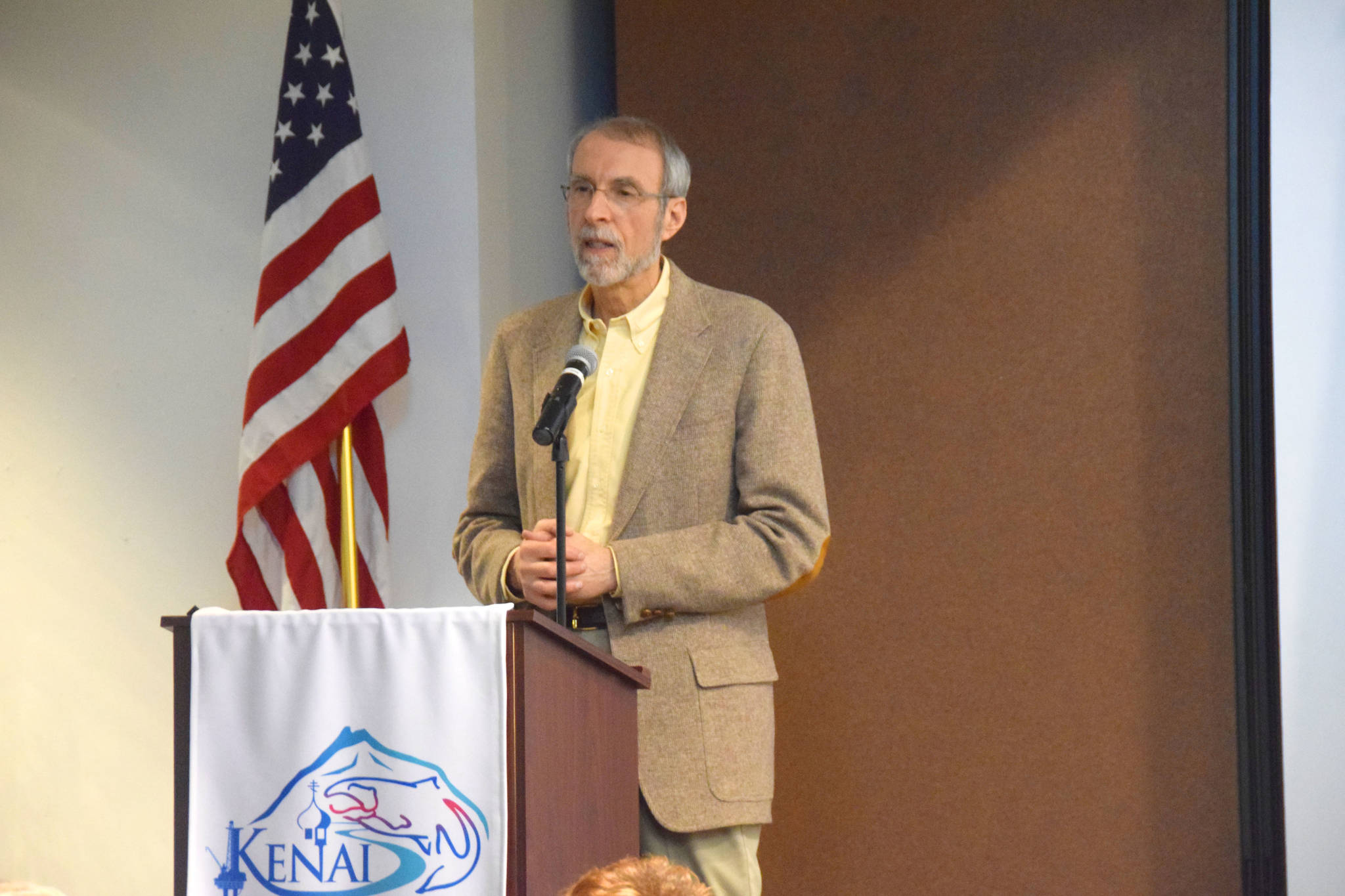An Alaska energy expert has bad news for those hoping for an economic boom from the proposed Nikiski LNG pipeline:
“There is no LNG project coming in the near future.”
At the latest Kenai/Soldotna Joint Chamber Luncheon, speaker Larry Persily — a former federal official for Alaska gas pipline projects and chief of staff for former borough mayor Mike Navarre — expressed doubts that the Alaska Gasline Development Corporation (AGDC) would make a final investment decision regarding this project by the end of 2019. “I don’t speak for them, I’m just telling you: there’s no possible way it could happen,” said Persily during his presentation at the Joint Chamber Luncheon on Wednesday.
Persily laid out the reasons why he is convinced the pipeline is more of a pipe dream than a reality. Persily’s three main arguments revolved around increased competition from other LNG projects, decreased demand from China and a lack of essential pieces to the puzzle. Without any partners, customers or money, the Alaska LNG project seems to be dead in the water, he said.
Regarding competition, Persily used examples from across the world of other LNG projects already underway or due to be started soon that are much less expensive and/or more worthwhile to investors than the one proposed for Nikiski. Qatar — which until recently was the world’s leader in LNG exports — plans to expand their local production 43 percent by 2024. Australia took the title of top producer from Qatar in November and currently has 10 LNG plants that produce 25 percent of the global capacity.
The issue of competition is compounded by the fact that many governments are offering tax incentives to other potential LNG projects. The state of Alaska and the boroughs that would be impacted by the project simply cannot offer the same incentives. One example Persily mentioned is the LNG Canada project underway in British Columbia. British Columbia has exempted the project from their tax on natural gas projects, their sales tax during construction and any increase in the province’s carbon tax after completion.
There are also six other LNG projects underway in the continental U.S., including the Golden Pass LNG project in Texas that just got a $10 billion investment green light from Qatar Petroleum and Exxon Mobil Corp. Five of these projects will be taking previously built import facilities and equipping the sites with export capabilities. The import facilities already have much of the necessary infrastructure in place, so these projects are very cost-effective when compared with building a new plant from the ground up. Finally, these projects are all along the Gulf Coast and have access to the world’s largest natural gas supply. For investors, deciding between the lower-cost option that taps into the largest reserves available or an option that would involve higher construction costs and smaller reserves, the decision is fairly straightforward, Persily said.
Persily made it clear that there only needs to be so many LNG plants in the world, and the Alaska LNG Project is doomed to not make the cut. While China has expressed interest in the Alaska project, the nation is looking at many other projects and is making no secret of keeping its options open. According to Persily, the proposed Alaska LNG pipeline would see China purchasing up to 75 percent of what it produces. Persily said that it would be unwise and financially unstable to have one customer buying up such a large bulk of production, and went on to explain that this high of a percentage is unprecedented with other export plants.
China’s impressive rate of growth over the past several years has been cited as a key argument in why the Alaska LNG Pipeline would be a smart investment, but Persily disputes the continuity of this claim. China reported economic growth of 6.6 percent this past year, which is the lowest it has been since 1990. China had nearly 30 years of their growth rate averaging above 10 percent, and this surge is what encouraged many U.S. companies to reach out to China for business opportunities. To expect that growth to continue, however, would be a mistake, according to Persily. China may be increasing its demand for gas imports, but Alaska is not their only option.
According to Persily, AGDC has received over $400 million in appropriations from the Legislature to pursue the LNG project. Persily said during his presentation that they are likely to run out of money by the end of the year. Further appropriations have not been granted to continue their efforts, and Gov. Dunleavy has made it clear that he does not want the state to spend any more money on the project. No pipeline also means no new road for Nikiski, which brings a much-debated issue in the community to a somewhat anticlimactic ending. “They don’t even have enough money to buy survey stakes,” Persily said.
While the project is not destined to go anywhere for a long time, the Dunleavy administration will likely finish the project’s environmental impact survey, Persily said. This survey once completed is valid for five years, so it would be one less step to worry about if the project does ultimately get underway.
Persily maintained that a lack of customers, investors and capital are obstacles for the pipeline project that are too big to overcome. While it is impossible to know if the hopes of an Alaska LNG Pipeline are dashed for good, Persily had a message to those in Nikiski unsure of the fate of their property: “Go ahead and redo your bathrooms. No one’s buying your land anytime soon.”
• By BRIAN MAZUREK, Peninsula Clarion

